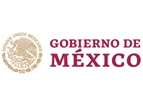
Our objective was to evaluate the relationships between dietary patterns and obesity, abdominal obesity, and high body fat proportion (measured by dual-energy X-ray absorptiometry; >25% in men and >35% in women) in an urban Mexican population. We conducted a cross-sectional analysis with the baseline data from 6070 men and women aged 20-70 y participating in the Health Workers Cohort Study, including information on participants' socio-demographic status and physical activity collected via self-administered questionnaires. Dietary intake was evaluated using a 116-item FFQ. Anthropometric measures were obtained using standardized procedures. We used factor analysis to identify 3 major dietary patterns: prudent, Westernized, and high animal protein/fat. We found that participants in the highest quintile of the prudent pattern were less likely to have high-body fat proportion (OR, 0.82; 95% CI: 0.70-0.98) and that participants in the highest quintile of the Westernized pattern had greater odds for obesity (OR, 1.46; 95% CI: 1.23-1.73), abdominal obesity (OR, 1.64; 95% CI: 1.37-1.96), and high-body fat proportion (OR, 1.17; 95% CI: 1.01-1.35). Additionally, participants in the upper quintile of the high-animal protein/-fat pattern had greater odds of being obese (OR, 1.23; 95% CI: 1.06-1.42). These results indicate that the dietary patterns of Mexican adults are associated with different levels of adiposity and obesity. Further prospective studies are required to confirm these associations.








